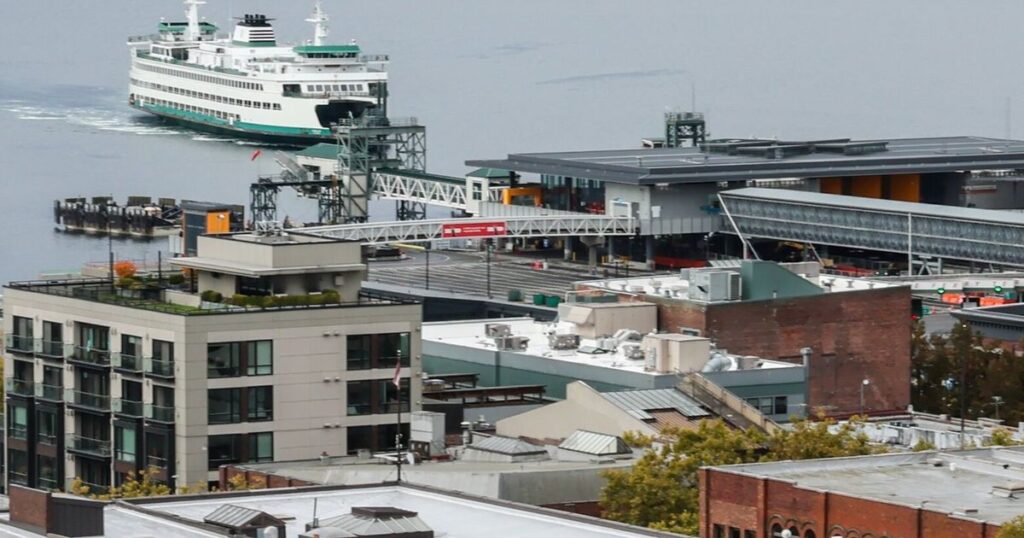[ad_1]
Images of the ferry Issaquah’s car deck sloshing with saltwater in a gale storm off Whidbey Island this month conjured the latest metaphor to describe the condition of Washington State Ferries: a system that became adrift and increasingly unreliable due to state leaders’ failure to plan for and avoid the rough seas it’s now encountering.
The lack of foresight by lawmakers in Olympia over the past 20 years plunged this network of marine highways into decay. The result is subsistence on a feeble fleet of vessels for at least another half-decade or so until new boats are built; in parallel, the ferries’ workforce, beset by a gray tsunami of retirements, struggles to keep a schedule.
It is notable Gov. Jay Inslee and state lawmakers have, in the last two years, finally prioritized investments to restaff and rebuild this tattered system.
It just came far too late.
“We’ve just kind of had a round of bad luck,” Inslee told the editorial board about a spate of vessel breakdowns in 2023.
Hogwash. The state made its own luck by allowing its ferry fleet to antiquate and amass $270 million in deferred maintenance.
How far have things fallen? You can quantify that by the number of places where only a fraction of ferry service is left (Vashon, West Seattle, Southworth, Bremerton and the Whidbey route), or add up canceled sailings this past year (3,500) or look at ferries’ on-time performance (down to 84%). But what about the wider impact on the state as a whole?
Perhaps if lawmakers outside of the Puget Sound region knew how important ferries are to the state’s economy, they’d be less quick to overlook investing in them. But even Inslee — a Bainbridge Island resident — and lawmakers in ferry communities also appear to have needed a reminder, given the state of things.
San Juan County leaders want to quantify the ferries’ economic importance. The most WSF-dependent destination — where it’s the only public transit — is awash in stories of stranded residents due to cancellations. But the islands are starting to feel real economic pain, as hotel and restaurant reservations fall, lodging-tax dollars decline and business suffers due to the ferries’ unreliability. Inslee’s budget calls for a $90,000 study of economic impacts there to assess the situation.
But what about the system as a whole? How many residents moved to a community like Bainbridge Island, knowing it had a 35-minute lifeline to the big city? How many businesses opened on islands and peninsulas in Washington, courting tourists with restaurants, bed-and-breakfasts and boutiques? When was the last time you watched a Seahawks game and didn’t see the camera panning Elliott Bay, ferries plying, before or after a commercial? The economic vitality is vast.
Yet America’s largest ferry system somehow got lost in the churn of demands within the Washington State Department of Transportation.
A full accounting — an economic impact study that spans the system — could help lawmakers across the state appreciate the ferries’ impact. Surprisingly, neither Inslee’s office, nor the state’s chief economist, is aware of any such evaluation.
That’s a missed opportunity. Untold scores of visitors will descend and the eyes of the world will turn to the region in 2026 for the World Cup. Will fans take a ride on a ferry, or will a system in disrepair discourage them?
Our state must never again allow such an iconic asset to become an afterthought in its transportation budget. These routes are vital marine highways transporting people and goods. But they’re also symbols of our state. When they veer off course, so do we all.
[ad_2]
Source link

